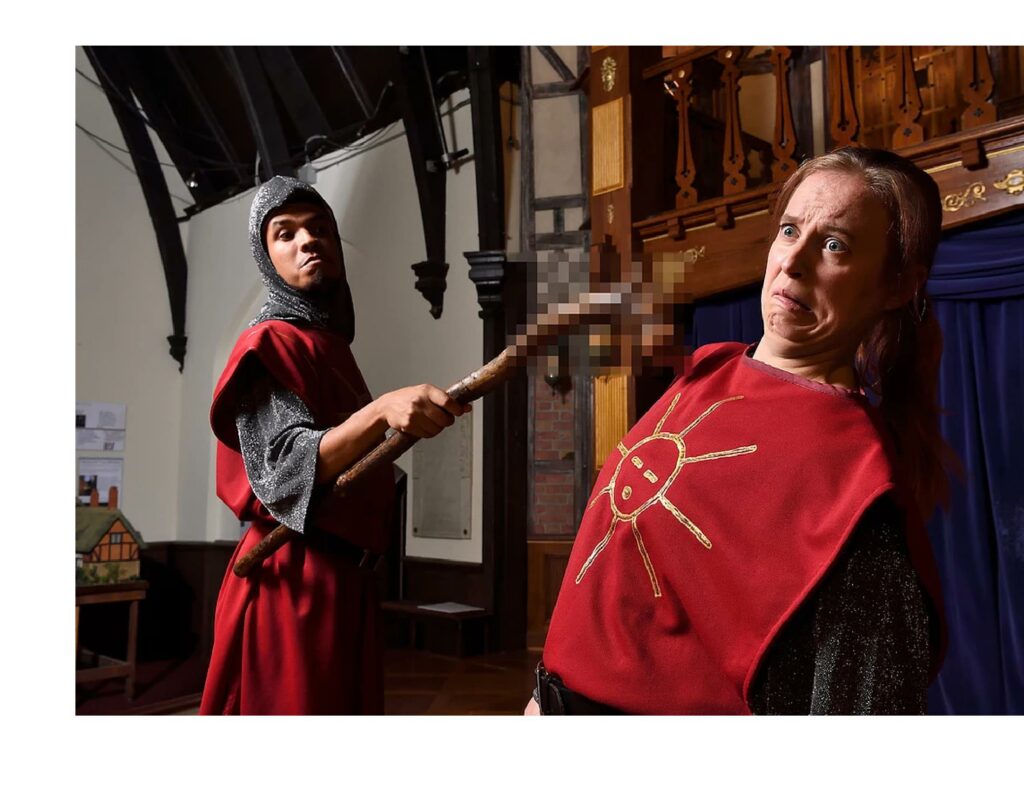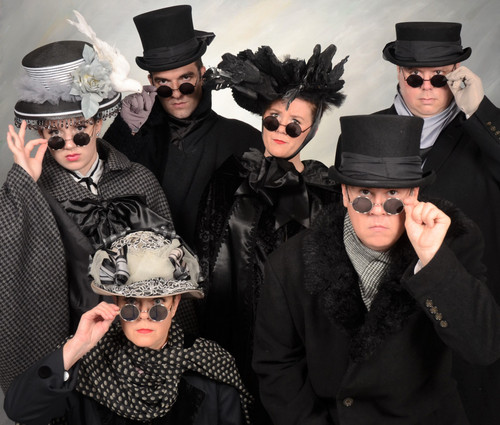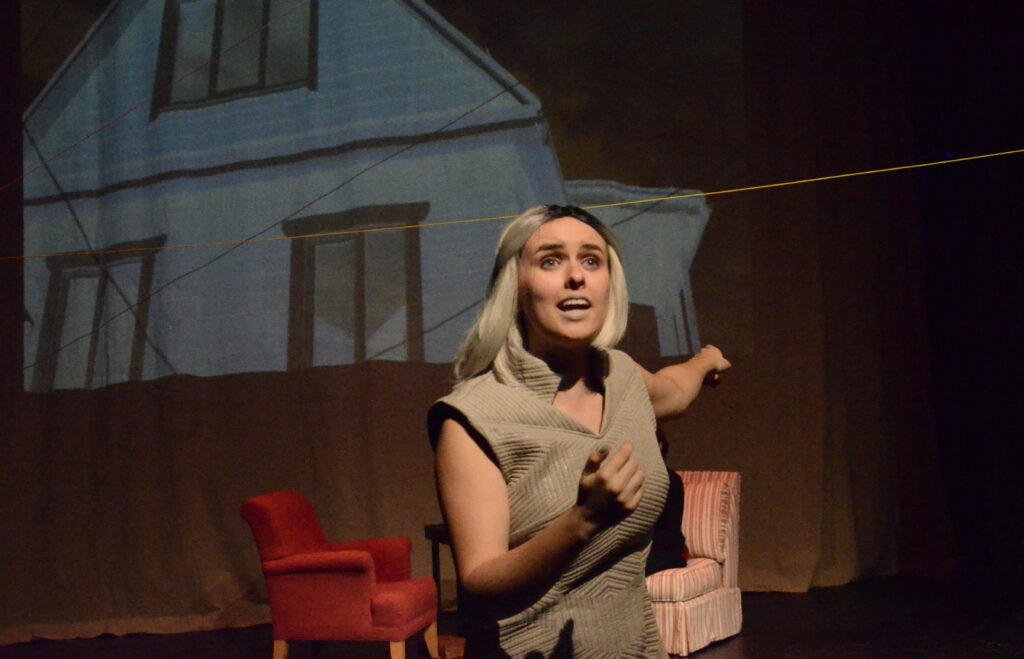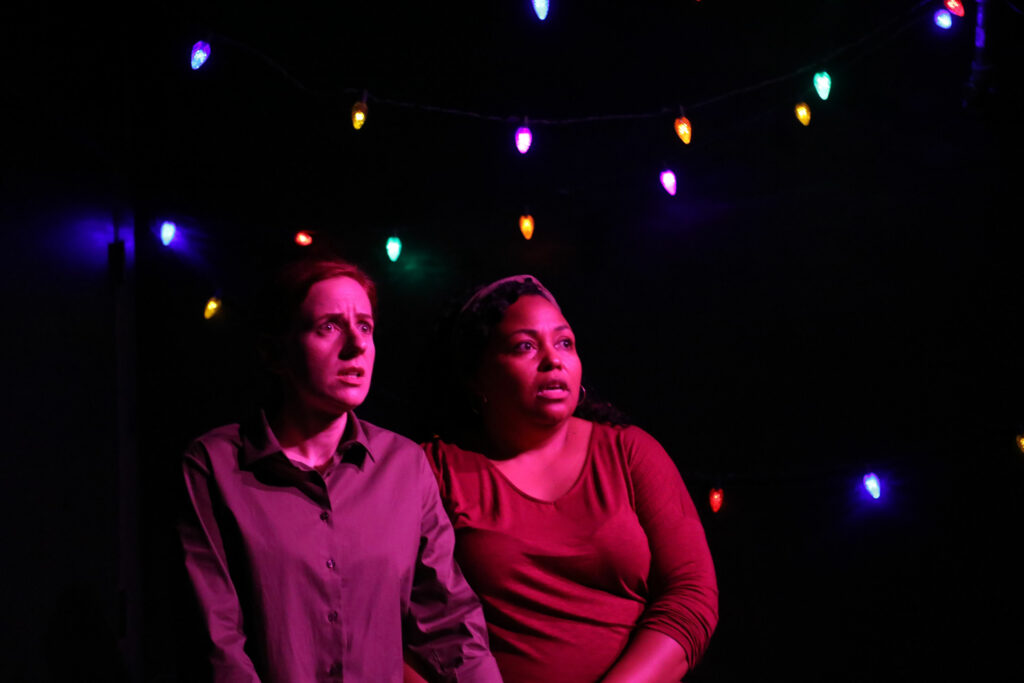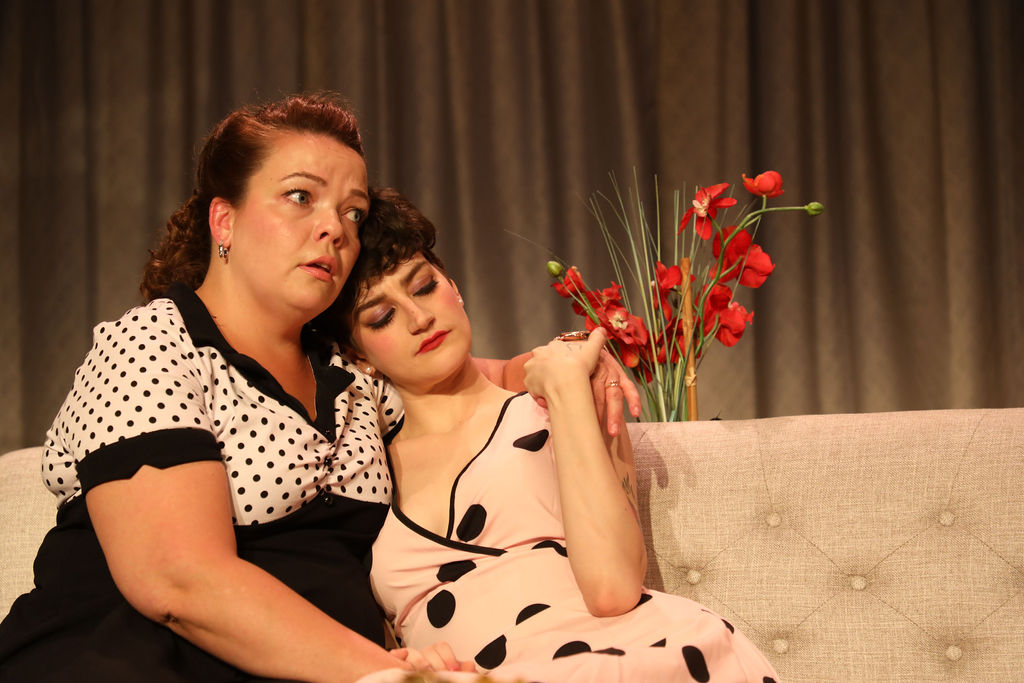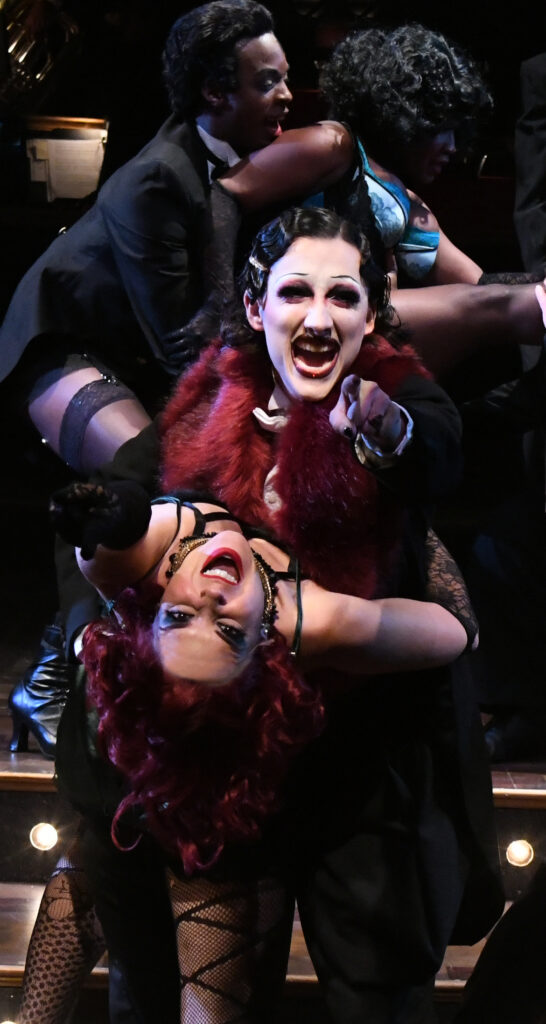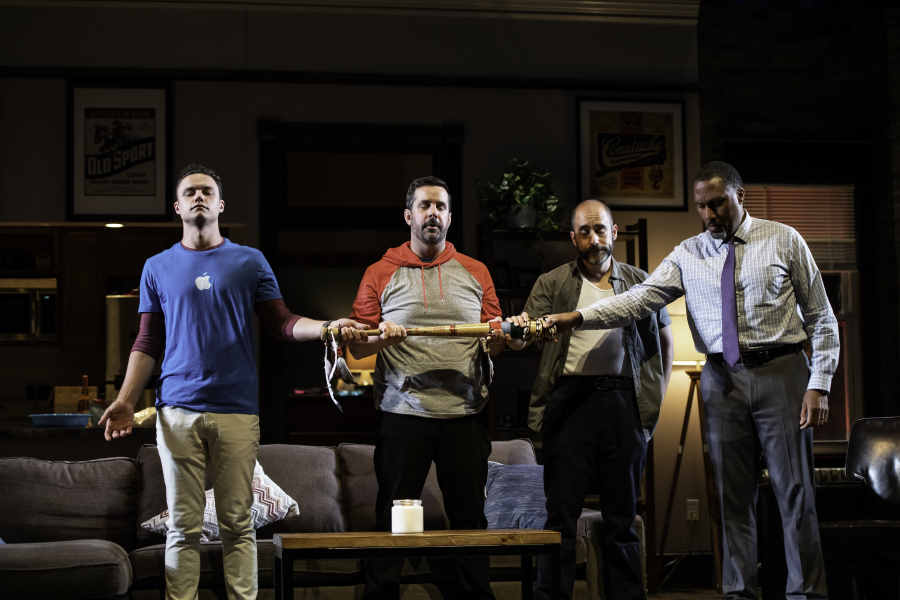August Wilson Ending on a High Note: RADIO GOLF at Everyman
Theater Reviews Page | Previous Theater Review | Next Theater Review
August Wilson Ending on a High Note: RADIO GOLF at Everyman

August Wilson’s Radio Golf, the last play of his Century Cycle and his life, is a smartly-organized triumph, a tight knot of well-developed plot and themes. The play has always had its naysayers, but my take is that Wilson had much to show and much to say, and (it is reported) he knew this was his last shot, and so he absolutely took it. Baltimore’s Everyman Theatre does a fine job conveying Wilson’s broad vision.
If I had to sum it up – and with such a thematically rich play that is a presumptuous undertaking – I’d say Wilson was trying to convey the urgency at that moment (the play was finished in 2004) and this moment too in the African American experience of staying true to tradition, to family in the broad sense, to old senses of meaning, even when they seem to be called in question by newer and (arguably) whiter ways of thinking and dealing. The thing that calls out for fidelity most of all, the sum and symbol of everything else, is a house we never see in this show itself, but Wilson’s audience will know from other plays in the Cycle, 1839 Wylie Avenue in Pittsburgh’s Hill District. In real life, there is no house at that address, but playgoers will know it as Aunt Ester’s home, a sanctuary of sorts as early as the first play in the Cycle, Gem of the Ocean, where marginalized blacks could look for some protection from the country’s oppressive ways and reconnect via mystical ritual with their African roots and souls. Threatening that house, in Radio Golf as in Gem of the Ocean, is not merely the might of the white power structure but also collaborationism by African Americans who have appropriated small bits of that power for themselves.
In Radio Golf, that threatening power is federally-funded redevelopment, ca. 1997. Under it, a grandiose development with apartments and a Starbucks and a Whole Foods and a Barnes & Noble is slated to consume the entire block of which Aunt Ester’s plot constitutes a part. Critical to the redevelopment funding is the statutorily-mandated participation of black-owned management, which is supplied by the duo of Harmond Wilks (Jamil A. C. Mangan) and Roosevelt Hicks (Jason B. McIntosh), d/b/a the Bedford Hills Redevelopment Corporation. Wilks and Hicks look upon this joint venture as a springboard both for their neighborhood and themselves. Wilks expects to use the development as the centerpiece of his campaign to become Pittsburgh’s first black mayor, masterminded by his smart, ambitious and politically-connected wife Mame (Dawn Ursula, pictured above with Mr. Mangan). Hicks sees the development as a route to his becoming a major player in Pittsburgh’s business scene, as well as a way to expand his planned radio station holding company and immerse himself in the world of golf, particularly as the game is played by the wealthy business-people whose company Roosevelt craves. As the play begins, all bodes well for all these plans.
But of course there will be a hitch. Onto the scene burst two slightly crazed ghosts of eras past. The first is Sterling Johnson (Anton Floyd), a handyman who had been Wilks’ schoolmate, and not a great fan (having punched him in the mouth in some schoolyard dispute), and who has subsequently done time for a petty offense. He is loud and unpolished, the very opposite of the urbane, easy-to-get-along-with Wilks, and he is engaged in painting the Aunt Ester house, first oblivious to and then unconcerned by the aim of the Redevelopment Corporation to demolish it within a few days. He puts the partners on notice that something is amiss with their plans. Next comes Elder Joseph Barlow (Charles Dumas), an old man with a definitely crazy affect, a documentably shady past, and an absurd-sounding claim: that he remains the owner of the house, and will not sell it.
Initially, Barlow’s claim seems to be the stuff of airy fantasy. The Corporation has acquired the house indirectly via a tax sale, and Barlow acknowledges having never paid taxes on the house. So the tax sale’s validity sounds plausible enough. But it turns out there is an explanation for Barlow’s failure to pay taxes, and that there was a technical problem with the sale, and therefore it is Barlow’s claim, not the tax sale, that’s valid.
And thus the struggle over ways of thinking and dealing commences. For Hicks, the past that Sterling and Barlow are protecting has no value, and the validity of Barlow’s legal claim is irrelevant. From his standpoint, when the powers that be have firmed up their plans to a certain point, mere legality must step aside. For Wilks, abandoning the rule of law leads to chaos, even if following that principle leads to results that disappoint the oligarchs. I’ll leave it to audiences to discover how the clash of perspectives works out, but it is clear that, regardless of what becomes of Aunt Ester’s home, Wilks’ choice to adhere to the rule of law and to honor his roots and ancestors would destroy his great plans, his business partnership, and probably his marriage. Though, of course, regardless of the outcome, such a choice would also make him a hero.
By contrast, Hicks’ anticipatory move to distance himself from Wilks will drive him into the embrace of the white business establishment, making his ownership of the “minority-owned business” purely a pro forma thing. He will be financially rewarded, but will be cut off from his community. In an angry speech studded with language a white critic cannot comfortably use even in a quote, Johnson makes clear that from this point, Hicks is black in name only.
What Wilks fights against and for is largely implicit and tied up in family history from Gem of the Ocean, which it really helps to have seen first. Wilks, who says in 1997, the year of Radio Golf, that he is resisting the example of and life plans for him made by his father, is the grandson of Caesar Wilks, a black man who in 1904, the year of the action in Gem, oppressed other blacks on the basis of borrowed white authority; in other words he engaged in activities that bear a spiritual resemblance to those of Hicks, activities with which Wilks will not allow himself to become complicit. And Barlow is the child of Citizen Barlow, a young man on the run from the racial violence of the post-Reconstruction South in Gem. Citizen Barlow benefited greatly from the sanctuary and the magic offered by Aunt Ester and her house. Moreover, it emerges in Radio Golf that the old Wilkses and the Barlows had some kinship ties their present-day descendants need to rediscover. In sum, Wilks is challenged to embrace his debt and even kinship to the world of Aunt Ester.
This is an unusual production for Everyman, in that only one member of the cast (Ursula) is a regular member of the company. There’s a correspondingly unfamiliar credit line on the program for “New York Casting.” Obviously, the big reason for these changes is that the cast is all-black, while Everyman’s resident company is not. While one can only applaud the choice of play, and while the casting and performances are impeccable, one hopes that Everyman will not abandon its usual practice of relying largely on its resident company; this virtue is what distinguishes it most from Baltimore Center Stage, the majority of whose performers for many years have come from through New York and have zero local ties. (Instead, perhaps, to avoid the issues which led to New York casting, the Everyman company might further diversify.)
I have in earlier reviews voiced some skepticism about August Wilson‘s reputation; I had not then seen Radio Golf, which, partly because it bookends so comprehensively with Gem of the Ocean, has prompted me to reevaluate everything in the Cycle with a view to its overarching design. I seem to be taking a contrarian view to the bulk of critical opinion, which gives higher marks to Wilson’s entire oeuvre but lower ones to this particular play than I do. So be it; to me this play is an absolute masterwork, a fitting high note on which to end an acclaimed career.
Copyright (c) Jack L. B. Gohn, except for production photo.
Photo credit: Theresa Castracane Photography
Theater Reviews Page | Previous Theater Review | Next Theater Review

